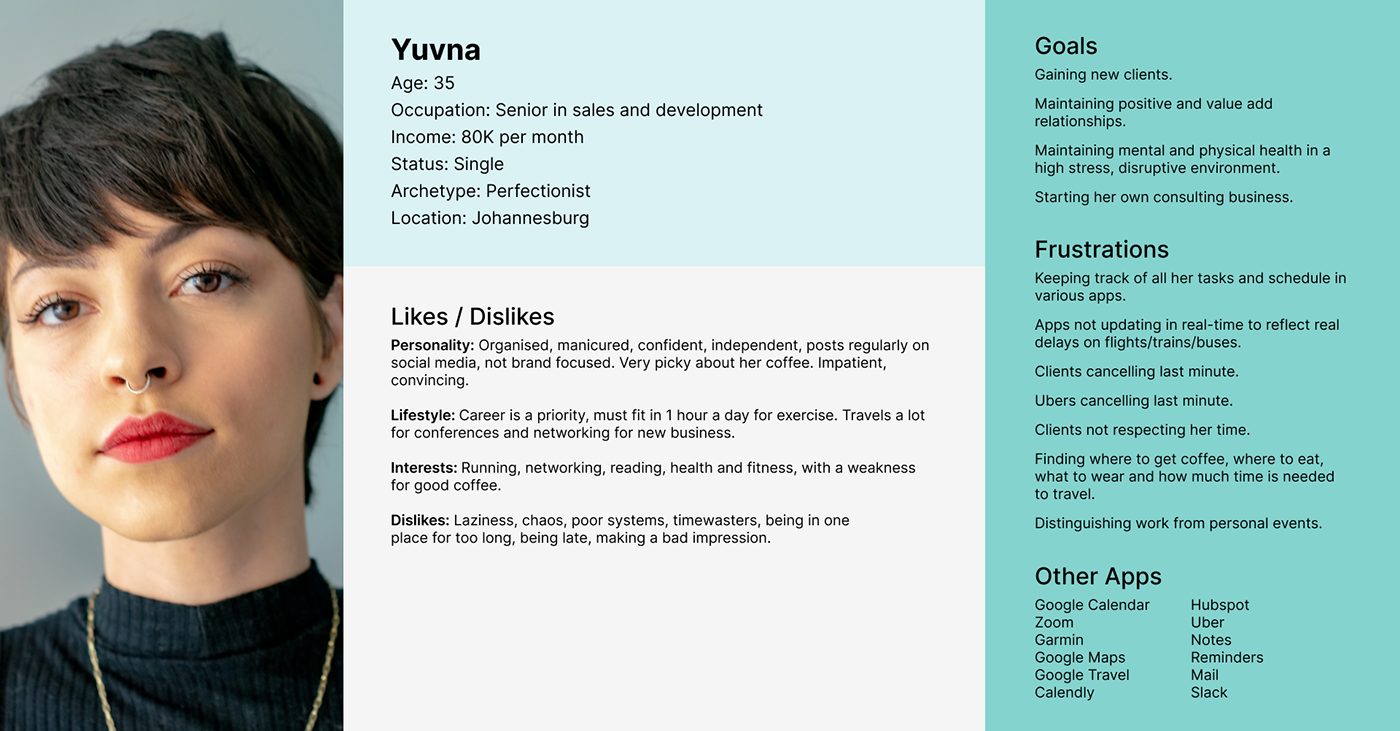Calendar Application
A calendar application designed to enhance work-life balance, improve punctuality, and facilitate easier event scheduling. The target users for this application are professionals with hectic schedules who struggle to manage their time effectively and find it challenging to plan their day, attend meetings, events, and manage personal commitments efficiently.
To make this calendar the best fit for these users, the following features are essential:
1. Simple navigation: The application should have an intuitive and user-friendly interface, making it easy for users to navigate and access all features effortlessly.
2. Event search: Users should be able to quickly search and locate specific events, saving them time and hassle.
3. Visually distinguished: The calendar should present events in a visually appealing and easily distinguishable manner, making it convenient for users to understand their schedules at a glance.
4. Faster scheduling: The application should offer smart scheduling features that suggest optimal time slots for events, reducing back-and-forth communication and saving users time.
5. All necessary information in one place: The calendar should consolidate all relevant event details, such as location, attendees, date/time, weather, and notes, in a centralised view, streamlining the planning process.
6. No double booking: The application must prevent users from accidentally double-booking time slots, ensuring better organization and preventing scheduling conflicts.
7. Minimal noise: The calendar should present a clean and clutter-free layout, minimizing distractions and enhancing user focus.
8. Simple flow: The application's workflow should be straightforward and logical, allowing users to perform actions seamlessly without complications.
9. AA compliance: The calendar should adhere to accessibility standards (AA compliance), ensuring that all users, including those with disabilities, can access and use the application without difficulty.
By incorporating these features, the calendar application will cater to the needs of busy professionals, helping them achieve a better work-life balance, stay punctual, and manage their schedules more efficiently.

UX and UI Process
In the process of developing the calendar application, I followed a comprehensive and user-centric approach:
1. Researched competitors to understand the existing market landscape and potential opportunities for differentiation.
2. Conducted interviews with the target market to gain valuable insights into their needs, preferences, and pain points.
3. Researched calendar design principles to ensure the application's design aligns with industry best practices and user expectations.
4. Identified specific goals and objectives for the application to guide the development process effectively.
5. Identified pain points experienced by the target users to address them in the application's design and functionality.
6. Created a persona to represent the typical user and better empathise with their needs and motivations.
7. Defined the scope of the project to outline the features and functionalities to be included in the application.
8. Prioritised the scope to focus on essential features and ensure a streamlined development process.
9. Mapped out the user journey to understand the flow of interactions and user experience throughout the application.
10. Outlined each screen to define the layout and key elements of the application's interface.
11. Leveraged a design system to ensure consistency and efficiency in design elements and components.
12. Built components to create a cohesive and unified visual identity for the application.
13. Created wireframes of screens to visualise the application's layout and interactions.
14. Developed a prototype to provide a tangible representation of the application's functionality.
15. Conducted testing of the prototype to identify and address any usability issues or shortcomings.
16. Collected feedback from the interviewed users on the prototype and incorporated their suggestions and improvements.
17. Transformed the prototype into a detailed design, adding visual elements and refining the user interface.
18. Implemented additional functionality based on user needs and feedback.
19. Conducted moderated testing with the interviewed users to assess the application's performance and usability.
20. Incorporated user feedback and refined the application based on their interactions and usage patterns.
By following this meticulous approach, I ensured that the calendar application is user-focused, addressing the target market's needs, and providing a seamless and engaging user experience.
You can experience the journey by clicking through the prototype below:


Learnings and Outcomes
1. Travel time delays are seldom up to date and do not correctly reflect traffic and flight delays.
2. When travelling, one is often offline so its difficult to keep track of unforeseen delays/changes.
3. Different clients use different applications/software that do not all speak to each other.
4. Differing timezones cause confusion when scheduling.
5. When travelling for business they have little to no time for themselves and are often exhausted.
3. Different clients use different applications/software that do not all speak to each other.
4. Differing timezones cause confusion when scheduling.
5. When travelling for business they have little to no time for themselves and are often exhausted.
6. Planning around what to wear, where to eat and stay is tricky.
7. Calendar scheduling needs to allow for focus time, travel time and unforeseen delays to prevent late arrivals or conflicts.
8. Suggested times made booking meetings less tedious by reducing a lot of back and forth on trying to find a time that works for all parties involved.
9. The view of a calendar event was quite well received with the event details, places nearby, travel time, attendees and weather all easy to navigate.
10. Users responses were positive and advised they would swap to this calendar application if made available.








